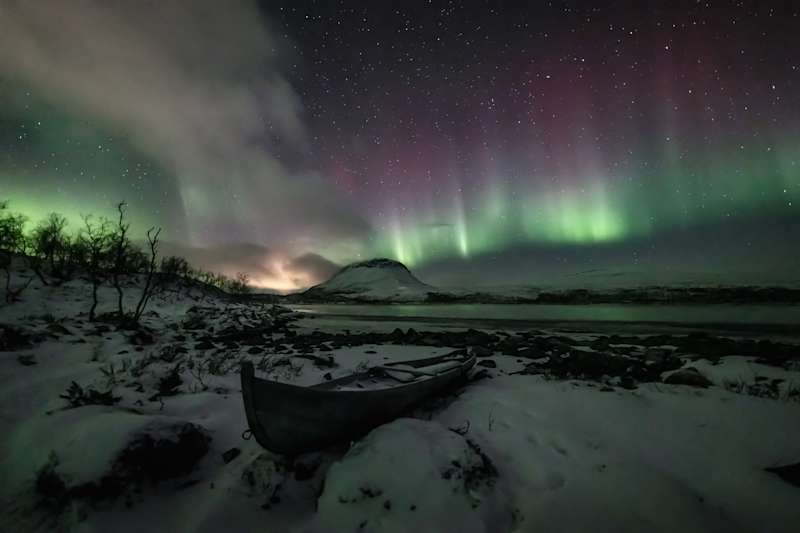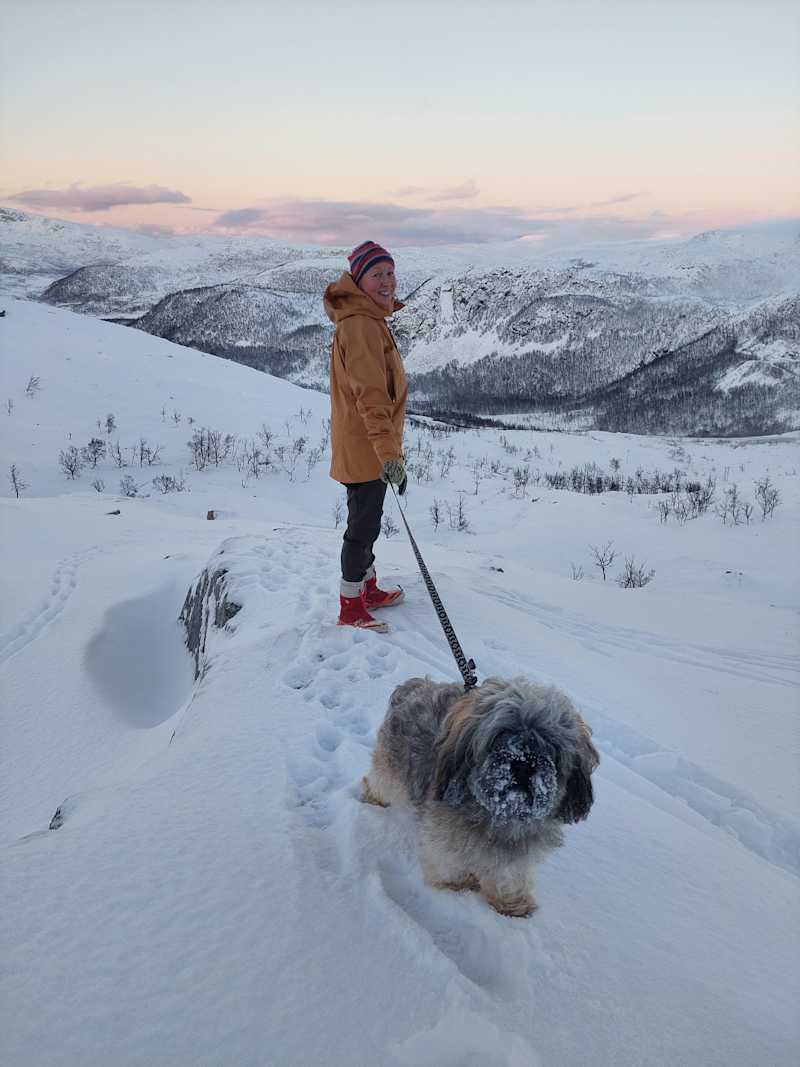Tourists want the perfect Instagram photo of the boat and are therefore spoiling Lapland’s unexplored nature – the vegetation is already dead

Tourists marched in line to Lake Tsahkaljärvi in Kilpisjärvi for good Instagram photos. According to the researcher, real nature often goes unseen and unexperienced.
Kilpisjärvi’s Lake Tsahkaljärvi is swarming with tourists. A group of British tourists wanders up to the campfire site and the cameras start snapping. Soon the British are joined by a few German and Taiwanese tourists. All eyes are on the mysterious snow-covered rowing boat, which, at least according to social media postings, is “the place to get the best pictures”.
According to Hutton, the old boat says a lot more than just people’s taste for nostalgic imagery.
– Social media is very quickly bringing up new destinations like this, which then need to be accessible to everyone, so to speak. They can then be places that tourists don’t really want to go.
Like Tsahkaljärvi’s beautiful wooden boat, which lies at just the right angle to Saana in the background and therefore looks very good in social media photos.
– The problem is that the boat is not along any route, and there is actually an old archaeological site there, which has not even been properly explored. But the land around the boat has been completely trampled by people’s tracks, and the vegetation is dead under the snow.
For his dissertation, Hutton studied thousands of Instagram photos taken from Kilpisjärvi and their captions. The end result was that tourists often forget to take good pictures of the surrounding nature.
Many people look to social media for inspiration, not realising the downside
Travelers rarely think that a mystical wilderness place praised on social media is a permitted area. Many people look to social media for inspiration and secret places that are not known to everyone.
According to Hutton, social media posts normalize behavior that breaks the rules or is otherwise unethical. For example, in Rovaniemi, enthusiastic self-employed tourists have disturbed the peace of the locals with their nocturnal northern lights viewing trips.
– People get the impression that everyone else does this too. That it’s okay to go somewhere, even if it’s people’s private or protected area, or even if it’s dangerous.
The number of rescue missions has increased with the advent of the internet
According to research, tourists in the Käsivarre area are younger than, for example, in other national parks in Finland. According to Hutton, the influence of social media on tourist flows is also growing all the time. At the same time, the number of rescue missions in the area has increased, when tired hikers are fetched from the fells.
– In the Some posts, for example, hikes of several days in the wilderness of Käsivarre are often praised. They might inspire even more inexperienced hikers to try similar hikes, Hutton says.
Still, the publications rarely tell any practical things, such as where you can find clean drinking water on a hike or how to wash yourself on a hike. In the material studied by Hutton and Rantala, the word \”adventure\” was mentioned hundreds of times. Mosquitoes were mentioned in only a few publications.
According to Hutton, it is also problematic if the place is seen only as a tourist destination and enchanting nature.
– How nature is presented in social media images also affects how nature is treated.
Mild symptoms easily follow.
For example, on the Norwegian side, there are cases where tourists have visited the cemetery with their needs. Hutton, who lives in Tromsø, has himself surprised tourists by peeing next to his boathouse and taking pictures of Hutton’s clotheslines. There have also been problems with, among other things, tourists camping on church lands.
– It says that the tourist no longer realizes that the locals live their normal everyday life in the area.

Thousands of social media postings showed an absence of everyday life for locals
According to Hutton, the phenomenon known from Norway can also be seen in Kilpisjärvi, although not quite as violently.
For his dissertation, Hutton studied about 6,000 images published on the Instagram service. The everyday life of the locals shined in the pictures by their absence: 90 percent of the pictures showed the landscape.
In practice, the publications were pictures of fells. There were hardly any people in the pictures, at least not locals.
– In reality, people can be seen everywhere. Power lines and other things are visible.
In the captions, the local population was mentioned only nine times in the material of thousands of pictures. However, the locals were usually referred to as tourism workers – or reindeer. Sámi was never mentioned.
– One of the pictures had, among other things, the text \”the locals have gone to the beach\”. There were reindeer in that picture, not people.
However, mentioning reindeer in the material was also rare, according to Hutton, even though it is a reindeer herding area. There were even more pictures of dogs than reindeer.
– When reindeer were mentioned, they were talked about as wild. For example, the way that the reindeer make Kilpisjärvi feel even wilder.
You can be in touch with confidence. You can also contact us by email: eevi.kinnunen@yle.fi. We read all communications, but we cannot guarantee a personal response to everyone. Information is processed for journalistic purposes only.
